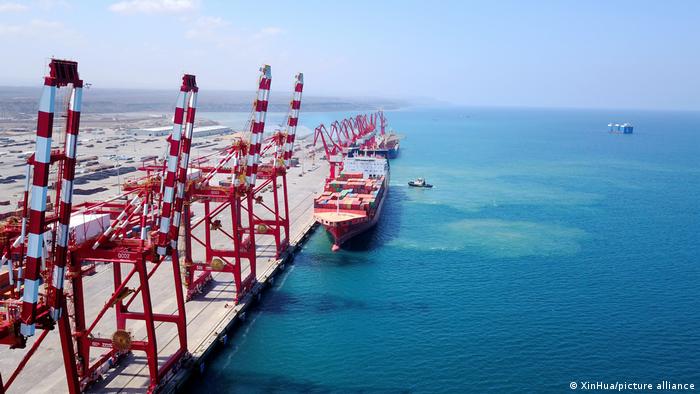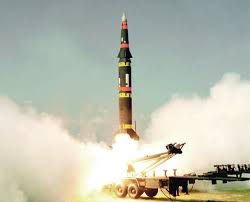AFRICA
A bulk wheat shipment is en route to Africa
The first grain shipment is en route to Djibouti weeks after a deal saw Russia allow the export of vital foods to resume via the Black Sea. But the 23,000 metric tons of wheat will bring only some relief to Africa.
Ukrainischer Weizen für Afrika | Hafen von Djibouti
The vessel is designated to arrive in Djibouti in late August
Two dozen ships have left Ukrainian harbors since the end of the Black Sea blockade in July, according to the UN Black Sea Grain Initiative Joint Coordination Center. One has set course for Africa.
The vessels are carrying corn, sunflower oil and wheat — a key import for many countries in Africa.
The shipment comes at a time when more people in Africa are in need of food than in previous years and as food prices continue to skyrocket.
In June, 89 million people in East Africa were in dire hunger, according to the UN World Food Programme (WFP). This year marked the fourth consecutive year of low rainfall in the Horn of Africa.
Donkey carcasses in the Somali region of Ethiopia
Ethiopia, Kenya and Somalia are in the grip of the worst drought in decades
A ship carrying hope
Noncedo Vutula, a South Africa-based expert on agriculture and regional integration, told DW that there are lessons to be drawn from the current grain scarcity.
“As much as we encourage trade, we should not be highly dependent on one region for a particular commodity,” said Vutula, a researcher at the Nelson Mandela School of Public Governance.
Play Video1:16 min
UN chief oversees grain exports from Ukraine: Julia Hahn reports from Istanbul
“We should be trying to diversify so that, when anything happens in one part of the world, at least there are other sources that we can look at for supplies of basic food commodities,” Vutula said. “So it’s a lesson to all of us, particularly in Africa: It has made us very vulnerable to whatever is happening geopolitically.”
The bulk carrier, Brave Commander, has cast anchor for inspection in Istanbul. The vessel is transporting 23,000 metric tons of wheat, a WFP delivery designated for discharge in Djibouti.
The grain is meant to feed 1.5 million people in Ethiopia for about one month, Martin Frick, the WFP office director for Germany, Austria and Liechtenstein, told DW.
He is reluctant to say how swiftly more ships will follow. “We are currently talking to our main donors through all channels in order to raise more money,” Frick told DW.
The demand is vast, he said. “We should try by all means to continue supporting the people. We are lacking money and food, but we try to prioritize and help those first who are most severely affected.” The situation in East Africa is dramatic, with the worst drought in 40 years.
Infographic: proportion of regional wheat to imports — with imports leading heavily
Why Ireland, Italy and China came before Africa
Frick sees hope as shipping on the Black Sea resumes. “To the extent of the ongoing normalization, also other costs will drop — such insurance. The companies have been reacting nervously on dangers to trade routes.”
The resumption of shipping traffic led to a price cut of about 10%, which was still 16% above previous year’s level.
Brave Commander, a bulk carrier, in the waters off the Turkish coast
The Brave Commander pictured near Istanbul
Some are irritated by the fact that the Brave Commander is only the first ship sailing toward Africa — three weeks after shipping resumed, and after ships set off for countries such as Turkey, Italy, Ireland and China.
Yet the authorities do not regard this as a problem: There are contracts that need to be fulfilled.
Stephan von Cramon-Taubadel, a professor for agricultural economy at Göttingen University in Germany, told DW that is an indirect ramification of trade.
Every ship leaving Ukraine helps to lower the world market prices, which enables bulk suppliers in Africa and of the UN to purchase more wheat. “First, the ships need to dispatch the cargo that has been preordered the longest,” von Cramon-Taubadel said.
Has Russia been stealing Ukraine’s grains?
Shipments resumed after the UN and Turkey made one agreement each with Ukraine and Russia to guarantee safe passage for cargo ships from Ukrainian ports and inspections in Istanbul to ensure that ships only carry goods that fall under the treaties.
In the first months of Russia’s invasion of Ukraine, grain shipments were impossible because of combat and sea mines.
Farming equipment in a vast field of wheat in Ukraine
Ukrainian farmers are harvesting again — and need to make space in their granaries
Kyiv has accused Moscow of stealing wheat and selling it on the world market as Russian. The local authorities in areas occupied by Russia do not even try to conceal these operations, according to von Cramon-Taubadel.
The transponder data from cargo ships give further evidence: Normally, trade ships have to disclose their position data at all times — but a remarkable number of Russian ships have switched off their transponders, the agricultural economist said.
“It is technically possible to check the origin of the wheat,” von Cramon-Taubadel said.
But, for the countries of destination, checking the origin is far from crucial. “It’s a costly procedure,” von Cramon-Taubadel said. “And it would thwart trade at a time where we want the grains from the Black Sea region to flow as quickly as possible to its consumers in need.”
Furthermore, the export flow has helped to clear the granaries for the next harvest: 6 million metric tons need to be moved out on a monthly basis, von Cramon-Taubadel said.
Lavrov meets with Ugandan President Yoweri Museveni in Entebbe on July 26, 2022
Just days after the grain accord was accomplished, Russian Foreign Minister Sergey Lavrov traveled to Uganda and other African states
More resilience, less dependency
Vutula and other scientists are exploring ways in which African countries can reduce the dependency on shipments from outside of the continent with vast arable lands that have not been used for farming.
“In terms of wheat-producing countries in Africa, there are lots of them. But it is not sufficient to feed the whole of Africa. For example, some countries like Ethiopia, South Africa, Tanzania and Nigeria are already producing wheat, but it is not enough to feed the rest of Africa,” Vutula said.
The demand is even higher because wheat is often used to make bread or pasta. African wheat farmers could increase their yield by using irrigation or heat-resistant seeds. But this might only be a long-term solution.
A man cooking while others look on in Mandazi, Kenya
Wheat is popular in many parts of Africa and often processed
Vutula suggests replacing the missing wheat with endemic grains and heat-resistant tubers such as cassava — which is not as common as it could be. “The product must be appealing to people,” Vutula said. “If cassava is not processed, other countries may not be inclined to use it. It’s used in Central and West Africa, but not so much in Southern Africa. If it’s processed, it can be used as a substitute. In terms of its nutritional content, it is 100% nutritious.”
But even cassava is hardly a solution to widespread hunger in Africa. Thus, the region’s eyes are focusing on the horizon off Djibouti’s shore and on possible further deliveries from Ukraine.
This article was originally written in German.


























